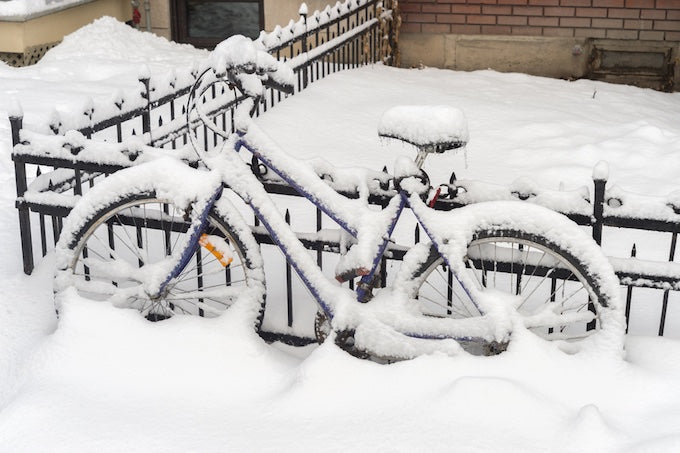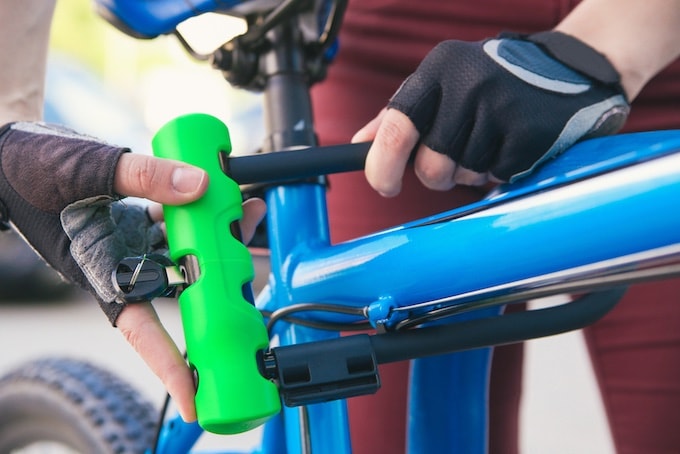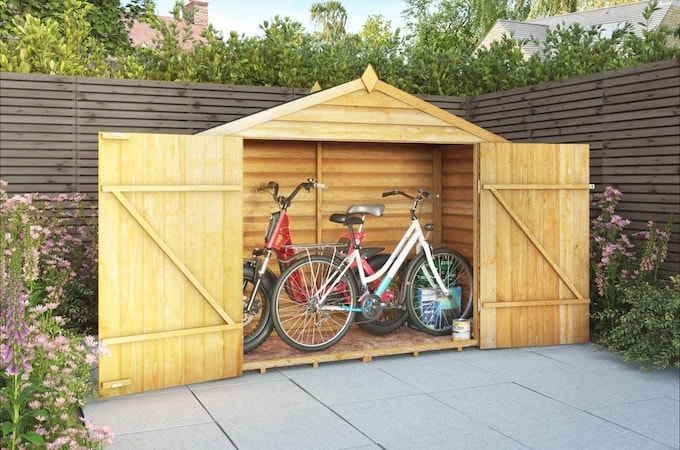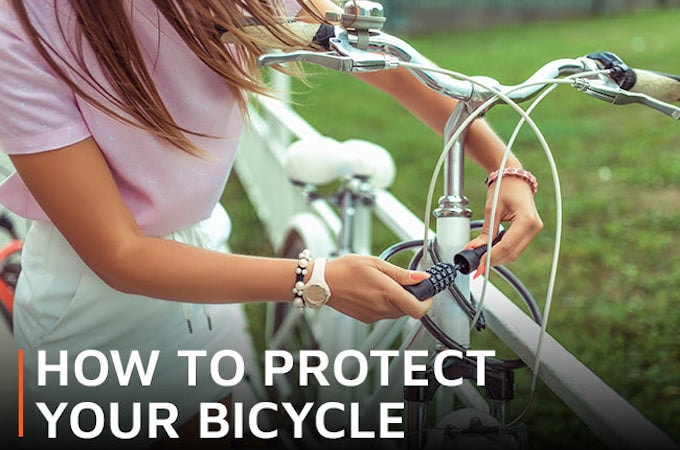Cycling is incredibly popular. And it’s not just for fitness fanatics – more and more people are saving on fuel and doing their bit for the environment by commuting to work by bike.
The kit isn’t cheap, so if you’ve invested in the latest gear, it’s important to keep it safe and in good working condition. You’ve probably thought about a lock to prevent theft while you’re out. But how can you keep your pride and joy secure and protect it from the elements when you’re at home?
If storing your bike inside your house, flat or garage isn’t an option, here are our top tips for secure garden storage, weather protection and convenience.
Protection from the elements

Image source: Marc Bruxelle/Shutterstock
Bikes stored outside, even underneath a tarpaulin, will rust over time. An aluminium frame won’t be quite as susceptible to corrosion, but you still need to protect the steel parts (gears, chain, cables and bolts) from moisture.
Storing the bike under an awning does help, as will a tarpaulin. Try not to wrap your bicycle too tightly in a tarp though. Condensation is just as bad as rain.
Keeping cycling kit in your home, garage or a shed is the best way to protect it from the elements. If you don’t have a back garden, or access is restricted, many purpose-built bike sheds are compact enough to fit alongside wheelie bins at the front of your property.
Secure your bike with locks and chain

Image source: Olexander Kozak/Shutterstock
It’s estimated that more than 350,000 bikes are stolen in the UK every year. Many of these are taken from their owners’ gardens by opportunistic or organised thieves.
The most popular way to secure your bicycle is to use D and U locks. These lightweight, hardened steel, oblong locks are easily transportable. Due to their inflexible nature, it’s tempting to go for a longer body. However, the shorter the distance between the bike and the object to which it is secured, the more difficult it will be to break with leverage.
A cable lock also provides a simple and cheap way to secure your bicycle, both at home and away. This is a steel cable covered with a weatherproof vinyl skin to protect your bike’s frame from scratches. Available in several thicknesses, you can upgrade to “armoured cable” for even greater strength.
Another solution is the chain padlock, covered with a vinyl sleeve. For ultimate peace of mind, choose the thickest chain you can afford, with the smallest amount of space between each link. Those secured with close shackle padlocks are more difficult to prise open, and act as a great deterrent to would-be thieves. A little heavy to carry, chain padlocks are best used at home, in a shed or garden.
Remember that any lock is only as strong as the object it’s secured to, especially if you plan to keep your bike in the garden. Thieves will saw through fence posts or drain pipes in minutes to swipe your precious kit.
Make space in your shed

Image source: Waltons 10 x 8 Overlap Double Door Apex Wooden Shed
The safest place you can store your bike is inside your home. But for most of us, an entrance hallway littered with muddy bikes isn’t practical. If you live in a flat it may even be banned in the lease.
If you don’t have a garage, a shed is a great option for concealing expensive cycling equipment and protecting it from bad weather. Here are some quick tips for safe shed storage:
- Obscure or cover the windows to prevent thieves from seeing valuable contents. You can buy fitted window security shutters for most Waltons sheds.
- Upgrade your shed’s hasps and padlocks.
- Check and reinforce the door hinges.
- Install an alarm.
- Mount a security camera to overlook your shed.
- Fit wall racks or floor anchors to the interior of your shed and chain your bikes up whenever you put them away.
Invest in a purpose built bike store

Image source: Waltons 7 x 3 Overlap Double Door Apex Wooden Bike Shed
If you’re short on space, your best option is a purpose built bike store. Concealment is the first line of defence, as most thieves are looking for things they can snatch or grab quickly. Secure the exterior of your cycle shelter with a good quality padlock and add a further lock or chain inside the shed if you think you’re at high risk of burglary.
Whether you cycle every day or just occasionally, a purpose-built bike shed is incredibly convenient. Double doors allow for easy access and there’s plenty of space to store all your other kit alongside. Keeping everything together streamlines your morning routine, and you’ll spend far less time hunting for locks, lights, helmets, gloves and repair items.
To make sure you get the best purpose built bike store for your needs, check out the different sizes and designs at Waltons and speak to one of our experienced team before you make your purchase.
Insuring your pedal cycle

Image source: Rainer Fuhrmann/Shutterstock
The results of an analysis of 38 contents insurance providers by Which, revealed that only two companies covered bikes at home and abroad as standard. The team at Which say:
“In order to get your bike covered under most home insurance companies, you will need to add ‘pedal cycle’ cover to your policy. There is often a limit to how much your insurer will pay out for the loss or accidental damage for a single bike, and this will be specified in your policy documents.”
What’s more, many insurance policies will not be successful if you fall foul of the conditions. ETA recently shared the top five reasons that cycle insurance claims are denied, including leaving your bike unattended for more than 12 hours and being unable to provide proof of ownership of a suitable lock when making your claim.
It’s unlikely that student bikes will be covered under their parents’ insurance policies when teenagers head off to university. This is because many policies only cover theft from the home. However, do check with your insurance provider – it may be relatively inexpensive to add this to an existing policy.
Alternatively, students can take out their own policy, or even a stand alone bike insurance policy. The NUS (National Union of Students) recommends Endsleigh Student Insurance services for specialist cover.
Tips for protecting your bicycle
- Remember to add your bicycle to your insurance policy and take photos of the purchase receipt for safe keeping.
- Always choose a lock that meets ‘Sold Secure’ standards and is approved by your insurer. Take photos of the lock and purchase receipt in case you need to make a claim.
- Concealment is the best form of defence. Store your bike in your home, garage or shed when not in use, and make sure it can’t be seen through any windows.
- Label your bike with a security marking kit.
- Register with the police-approved National Cycle Database to help reunite you with your bike if it’s stolen.
- Check out the Thames Valley Police website for further security tips and to find out what to do if your bike is stolen.
Lead image: Shutterstock




